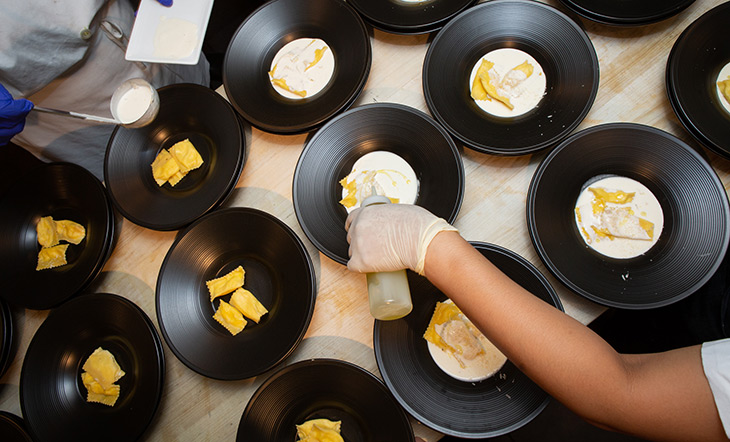What We Can Learn From Indigenous Food
Lessons on surviving COVID-19 from Indigenous food advocates
Morgan CarterJuly 22, 2020

For the past few months, we've been hosting webinars as part of our Industry Support learning series. Topics have covered all facets of the current crisis, from deciphering government relief options, to gatekeeping in the hospitality industry, to relief kitchens, and more. Last week we gathered advocates from Indigenous nations to discuss how the community has continued to thrive and grow their food systems, culture, and communities in spite of historical pandemics and epidemics.
- The global COVID-19 crisis has exposed structural weaknesses in our dominant food supply chain, and one of the hardest groups affected are Indigenous communities. However, Indigenous people have historically persisted despite various epidemics—including influenza, smallpox, and tuberculosis—and should serve as a resource on how to survive.
- In light of COVID-19, Indigenous communities have found multiple ways to empower themselves:
- Petra Harmon One Hawk of the Standing Rock Sioux Tribe has relied on her community's ceremonial protocols and practices, such as isolating and burning items of the deceased, as a guide during the pandemic.
- Valerie Segrest of Native American Agriculture Fund coordinated with a master food preservationist to provide online classes and home canning supplies to the Hoopa tribe.
- The Flower Hill Institute allocated a seed mix to over 200 tribes in order for them to create their own milpa gardens, an Indigenous method of farming that includes a wide variety of different plant species. The mixture, which included 50 different seeds such as cucumber, squash, and beans, provided tribes with a low maintenance and local source of food.
- Strengthening the food system for the future requires the following from these advocates:
- Regionalizing food systems, redeveloping federal and local feeding programs, and decreasing risks for food producers (farmers, fishers, etc.) to be incorporated into the system.
- Refer to Indigenous voices as a resource and bring them to the table when forming policies and legislation.
- Educate individuals and communities about local and traditional food systems with outdoor education, experiential learning, and hands on work. “The first form of literacy was learning to read the landscape, the curriculum was the land,” says Segrest.
Check out what's on-deck for our webinar series and find past recordings here.
Our team would like to know what topics you would like us to cover. Please email us at impact@jamesbeard.org with your suggestions on speakers, resources, and issues you would like us to host.



-57 web.jpg)


